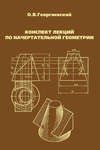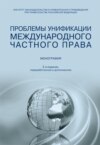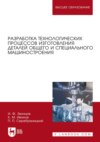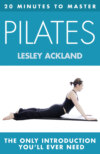Kitabı oxu: «10-Minute Pilates with the Ball: Simple Routines for a Strong, Toned Body – includes exercises for pregnancy»

Contents
Cover
Title Page
Introduction
Part 1: The Mind–Body Connection
Mindful Exercise
Essentials
Key Terms
Body Basics
Part 2: Body Awareness
Preparation: What you should know before you start to exercise
Breathing
Part 3: Pilates with the Ball
First Movements
Abdominals
Strengthening Your Back
Toning and Stretching Your Legs
Upper Body Toning
Part 4: Pilates for Pregnancy
Exercising during Pregnancy
Pilates and Pregnancy – by Jane Ireland MCSP SRP, Chartered Physiotherapist
First Movements
Pelvic Floor
Back and Thighs
Upper Body
Legs and Bottom
Stronger Stretches
One Mother’s Story: Julia Daly
Acknowledgements
Keep Reading
Copyright
About the Publisher

Introduction

10-Minute Pilates with the Ball is based on my Body Maintenance Technique, a Pilates-based programme which focuses on equal amounts of strengthening and stretching exercises to give you a correct, posturally-aligned body.
THE PHYSIO BALL
Physio Balls are an important tool in my Body Maintenance studio at Pineapple in London’s Covent Garden. Currently available in sport shops, Physio Balls are a very simple exercise accessory that can be used almost anywhere – at the studio or at home, even in the office. They don’t require a lot of space or time to blow them up; they’re not a complicated piece of equipment.
Physio Balls have been a part of Body Maintenance for the last 10 years. When I first introduced them, they weren’t widely known. Initially I started using them in my Pilates-based technique because I had learned of their use in advanced physiotherapy therapy taking place in German clinics.
A serious remedial tool, Physio Balls are especially important for patients recovering from surgery, particularly those recovering from spinal surgery (laminectomies). They have also been used at the New York City Ballet and, since then, have been successfully incorporated into most gyms and exercise regimes, where they have proved to be extremely useful.
In the Body Maintenance studio I have devised simple exercises for people recovering from spinal surgery. They are also fantastic for shoulder and spine problems, particularly scoliosis in the upper back. Amazingly, most of my clients now do at least 25 to 30 per cent of their 90-minute programme with a Physio Ball.
From the point of view of strengthening, stabilizing and mobilizing your joints and muscles, Physio Balls are essential. However, it is worth remembering that for people with a serious problem or injury, the use of a Physio Ball must be undertaken only under the guidance of a qualified physiotherapist.
The exercises in this book are not, however, remedial exercises. They are ordinary exercises that have been designed to offer you a varied and challenging programme. The standing and balancing exercises, some of which have been published in my previous books, can be used with or without a Physio Ball – although one of the many pluses of working on a ball is that the exercises are not done standing, so the correct posture can be more easily be achieved.
10-Minute Pilates with the Ball is an exercise routine that is rigorous, but one that does not place undue weight or pressure on the joints. These exercises allow you to focus more on correct posture and correct alignment, without having to worry about gravity in the way that you do when you are standing.
PILATES AND PREGNANCY
In the Body Maintenance studio, working with Physio Balls has been particularly useful for my pregnant clients. The Body Maintenance studio specializes in post- and antenatal work, and we teach pregnant clients right up until a week or two before birth; we also see them anywhere from six weeks after giving birth. A section of this book has been specifically devoted to the weekly exercise programme performed by 10 to 15 of my clients a week in the Body Maintenance studio. You can be confident that they have been tried and tested successfully for a number of years by many women before and after they give birth, week in and week out – some even after their third or fourth child, or after having given birth to twins.
A SHORT HISTORY OF PILATES
Pilates was originally devised by Joseph Pilates, born a sickly child in Germany. His system of gentle physical exercise helped him overcome tuberculosis and go on to become a professional gymnast and athlete. Interned in Britain during the First World War, he developed his regime for injured soldiers, incorporating pulleys and springs attached to hospital beds, to prevent muscle wastage, maintain strength and increase stamina. Later in Germany, the dancer and choreographer Rudolph von Laban used Pilates’ warm-up and stretching techniques for his own dance troupe.
In the 1920s, Pilates moved to the US and opened a clinic in New York City. It soon became a favourite of the dancers and choreographers Martha Graham and George Balanchine, who brought in members of the New York City Ballet. A popular therapy for dancers wanting to work around their injuries, the low-impact exercise system also had early devotees in Hollywood stars like Katharine Hepburn and Lauren Bacall. In recent years, with the lean, youthful look in vogue, Pilates has been picked up by modern celebrities like Madonna and Uma Thurman.
Pulsuz fraqment bitdi.











